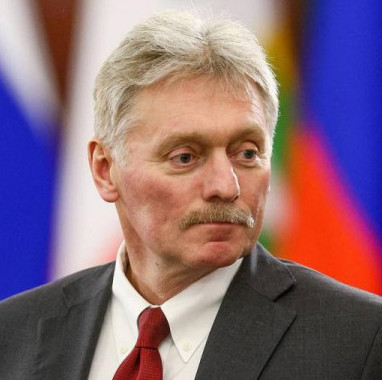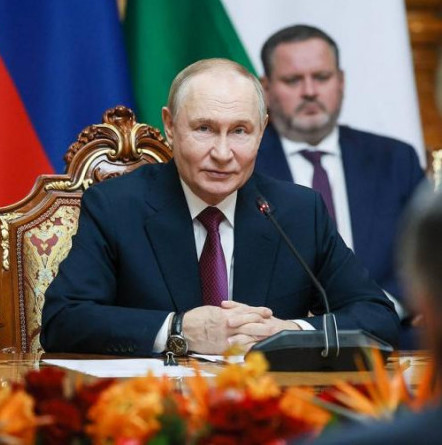
On October 18, DPA news agency reported, referring to its own sources, that German air forces and their NATO allies took part in secret nuclear war games in Europe. The so-called Steadfast Noon exercises involved German warplanes transporting U.S. B-61 nuclear bombs. According to DPA, the Bundeswehr sent Tornado combat aircraft of the 33rd tactical air squadron to those exercises. These warplanes are located at the Buchel Air Base in the south-west of Germany. Reportedly, American B-61 hydrogen air bombs with nuclear warheads are also stored at that German base, as well as at the bases in three other European countries (Belgium, Italy, the Netherlands) and in the Asian part of Turkey.
The United States and NATO member-states regularly conduct exercises simulating the delivery of such training bombs to the positions of the “potential enemy”. Such war games involve planes of the five NATO member states that have American tactical nuclear weapons on their territories. However, other members of the alliance, the countries that do not store US nuclear weapons, are also invited to participate in the exercises. Namely, the recent exercises involved military pilots from Hungary, Greece, Denmark and Norway.
The NATO member-states and the US show their transatlantic “solidarity” under the Support of Nuclear Operations with Conventional Air Tactics program (SNOWCAT), as well as in the course of the Steadfast Noon air military exercises. The war games are conducted under US agreements with the member of NATO "nuclear pool" and are referred to as “nuclear sharing agreements.”
It is remarkable that the Western nuclear powers that are members of the alliance intend to expand the participation of non-nuclear member-states in solving a wide variety of tasks related to the use of nuclear weapons in various parts of the globe, especially in Europe and the Asia-Pacific region.
For this purpose, in its New Strategic Concept, adopted at the summit in Lisbon in November 2010, NATO expressed its commitment to ensure wider involvement of all Allies in collective planning of nuclear missions, deployment of US nuclear weapons during peacetime, as well as their participation in command and control and consultation mechanisms related to the deployment and possible use of nuclear weapons for various purposes. The wording on enhancing NATO's “forward-based” nuclear weapons in Europe is also contained in the documents of the alliance summit held in Brussels in July 2018.
It is remarkable that some of their documents the Pentagon and the US Department of State describe B-61 air bombs with nuclear warheads as "strategic." The reference materials released by US Department of State and the National Nuclear Security Administration on January 3, 2013, regarding the life extension program for the American tactical nuclear weapons, also qualify three B-61 bombs as “strategic.”
Two of the five types of existing warheads of such air bombs, namely B-61-7, B-61-11, as well as B-61-12 with new levels of precision targeting are “strategically important.” They can be delivered to targets not only by medium-range tactical aircraft, but also by American heavy strategic bombers. Each of the warplanes is capable of carrying up to 16 bombs.
For the new B-61-12 bomb the US designed and built a new fighter-bomber F-35A. The plane can carry two such bombs. Many European and Asian countries expressed their wish to buy F-35 aircraft and in most cases they specified that they needed F-35A, the one which is capable of carrying nuclear weapons.
Thus, the US is launching “dual deployment” of its nuclear weapons in Europe. These are airborne nuclear weapons that have been stored on the continent for almost 70 years (!) and new medium-range ground-based nuclear missile systems that may appear in Europe following Washington’s unilateral denunciation of the INF Treaty. In addition, there is a provocative practice of nuclear war games conducted by NATO.
In this regard, Russia could make wider use of Article 1 of the Treaty on the Non-Proliferation of Nuclear Weapons (Non-Proliferation Treaty or NPT) in order to bring forward its stance on nuclear issues after the denunciation of the INF Treaty. This article provides a barrier to the deployment of nuclear weapons of the nuclear states on the territory of non-nuclear states. It is also important to apply the second article of this treaty, which prohibits the deployment of nuclear weapons of nuclear states on the territory of non-nuclear countries.
If NATO member-states finally abandon Russia’s moratorium on the deployment of new medium-range nuclear missiles in Europe and Asia, previously banned by the INF Treaty (currently, they simply ignore this idea), the application of the two articles of the NPT to the United States and its allies, which either already house American tactical nuclear weapons, or may agree to additionally deploy new American medium-range nuclear missiles on their territories, could serve an important deterrent.


